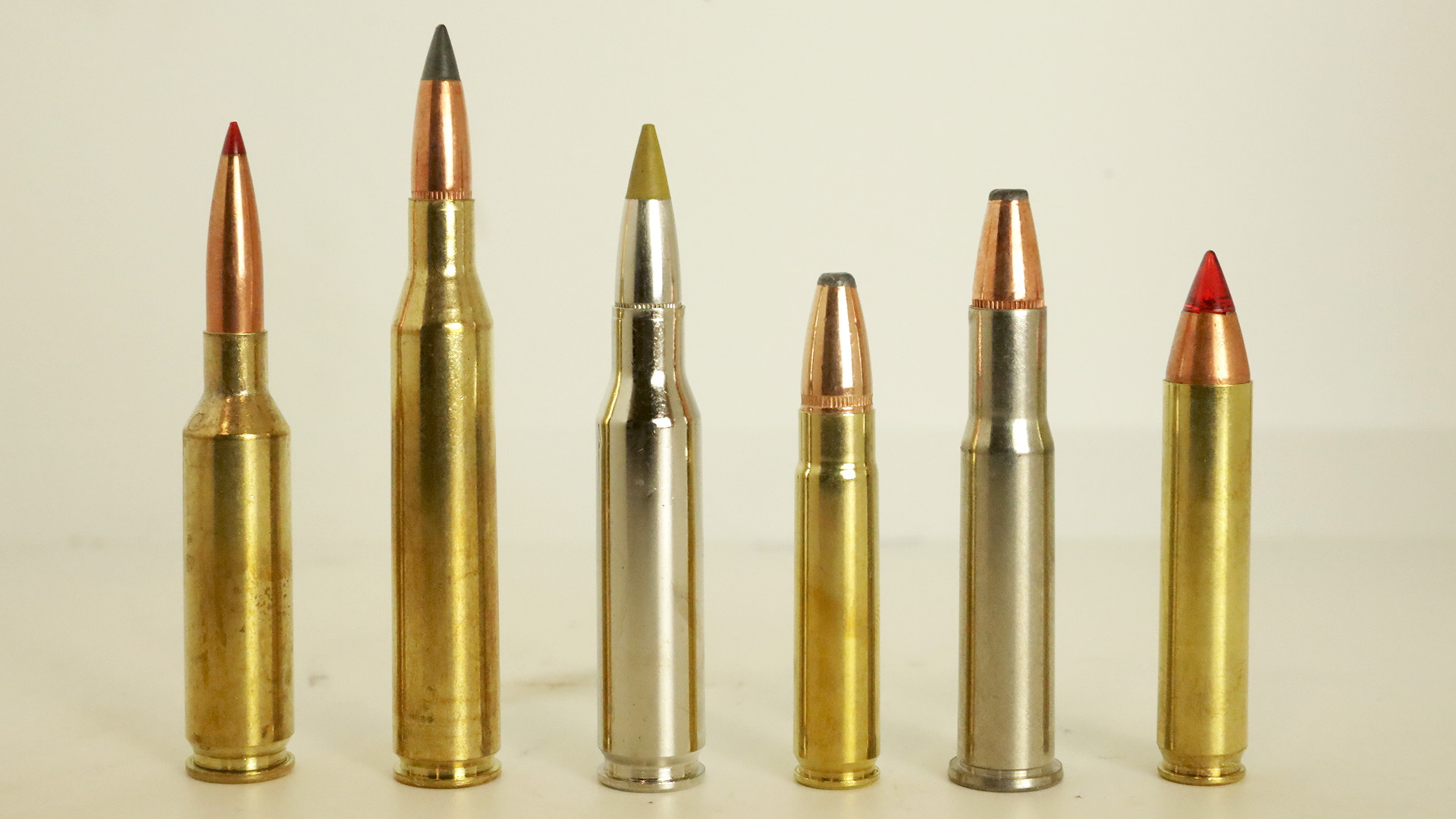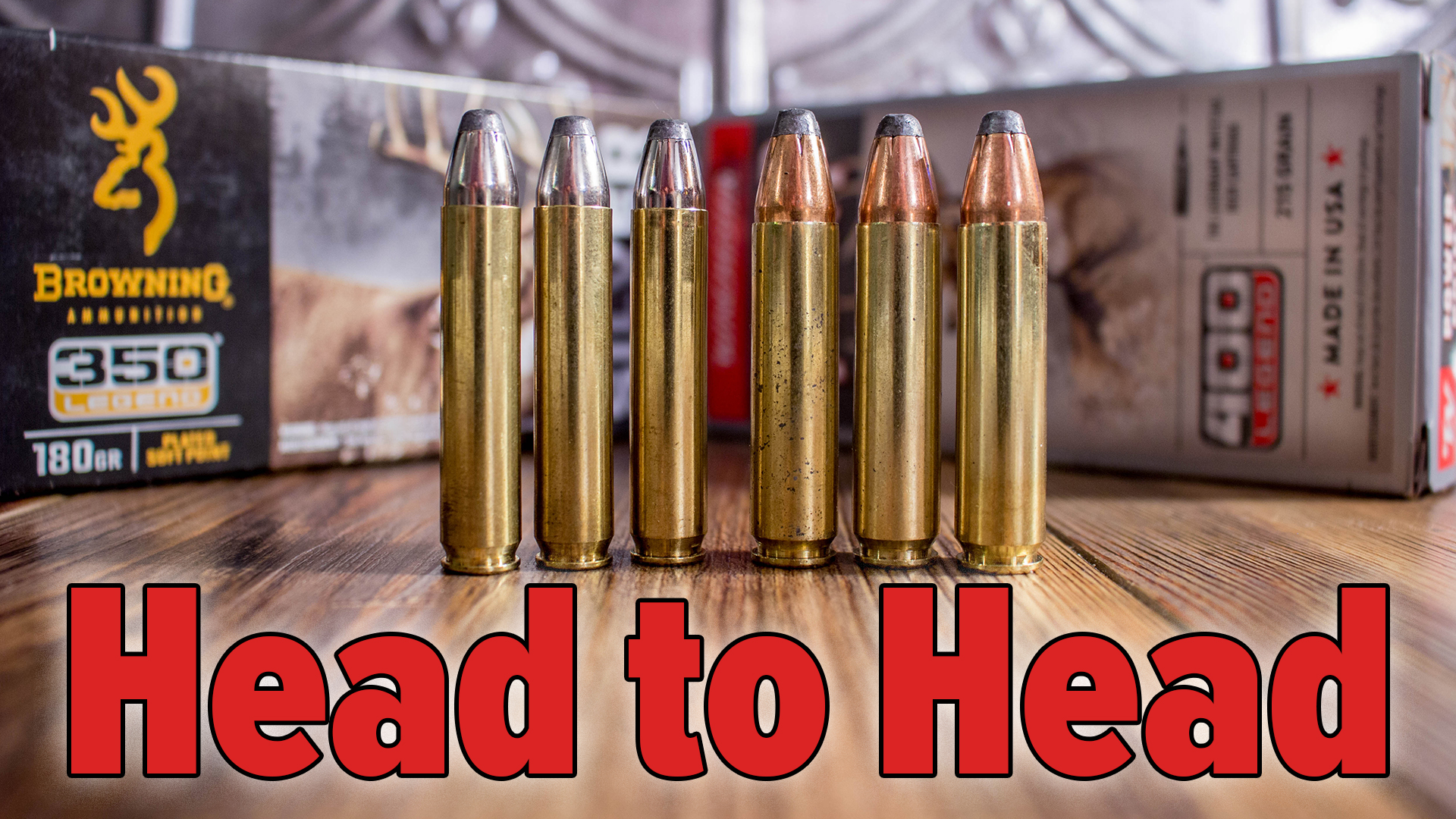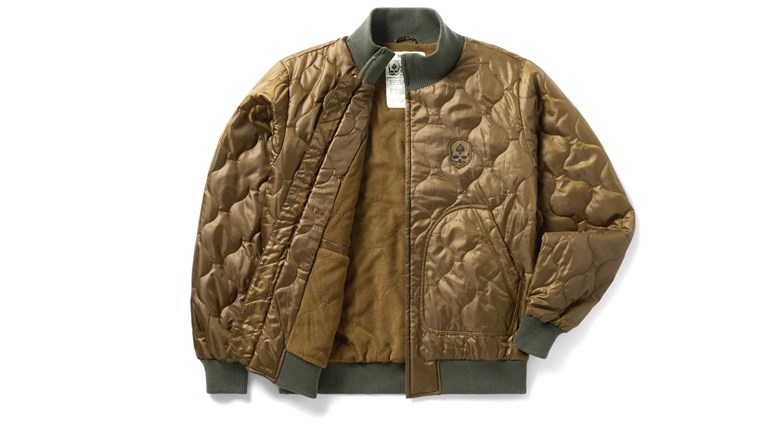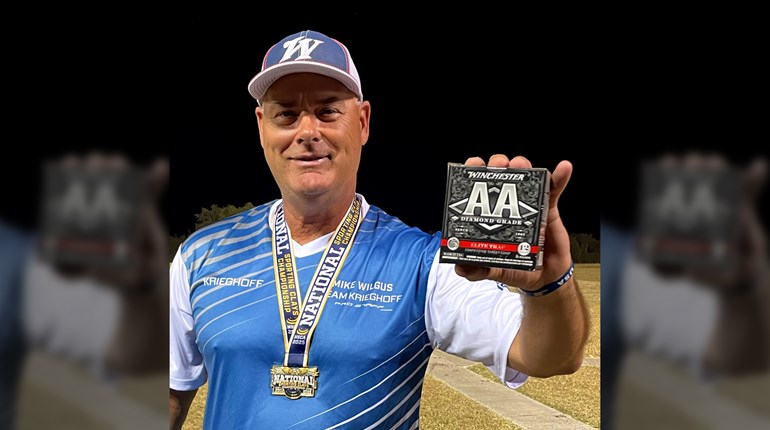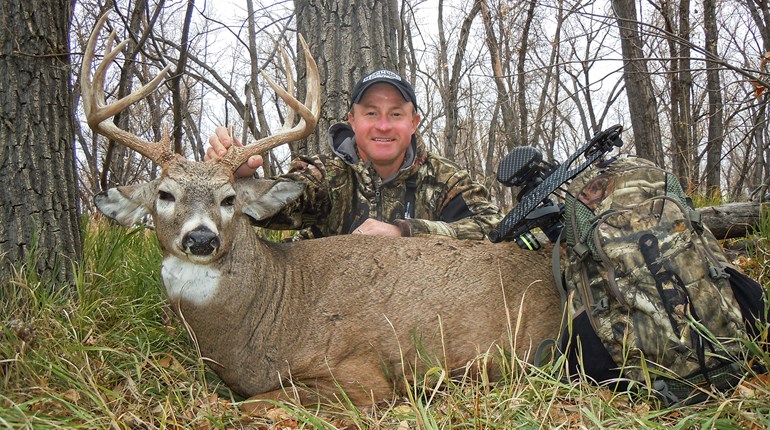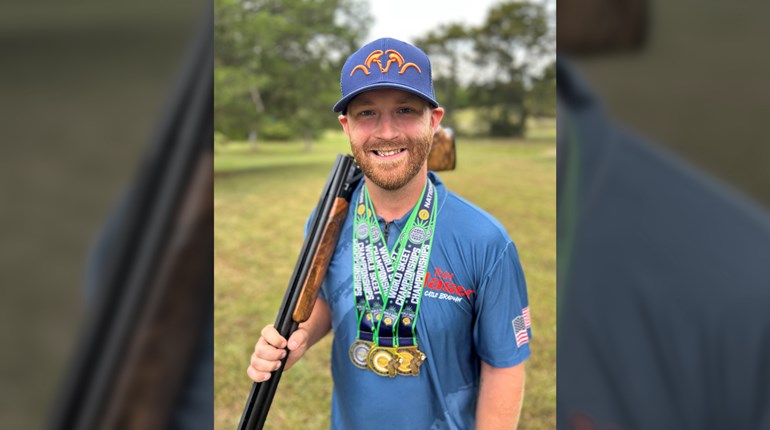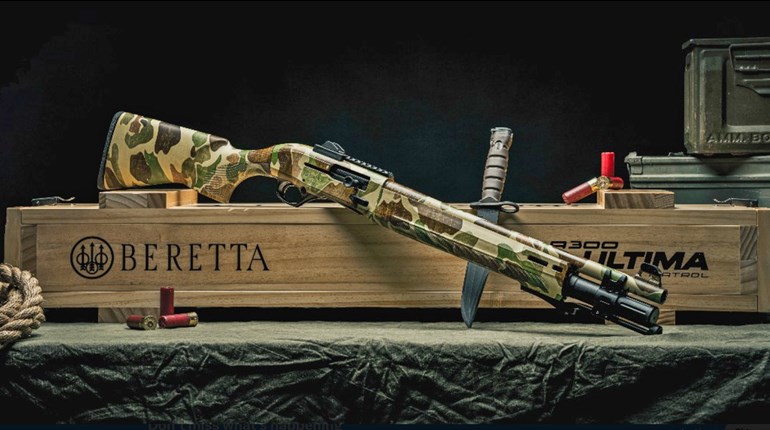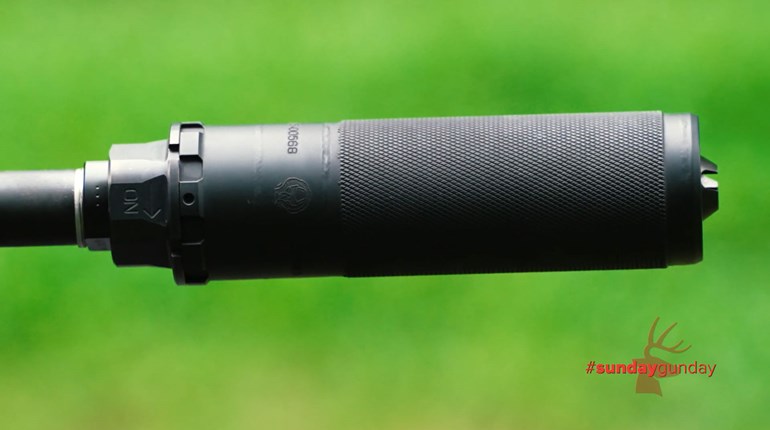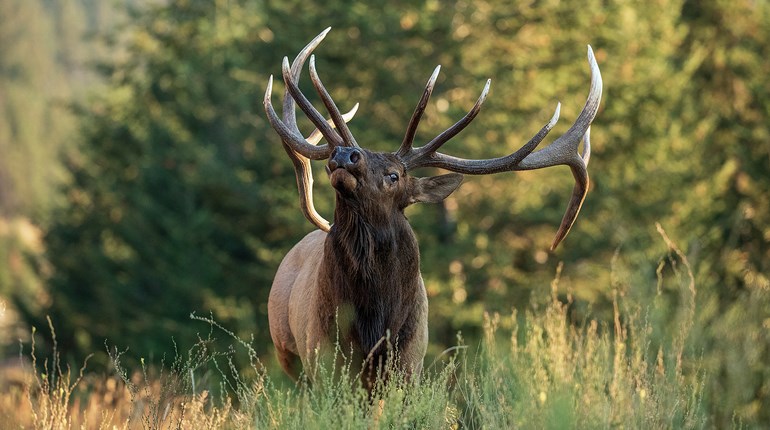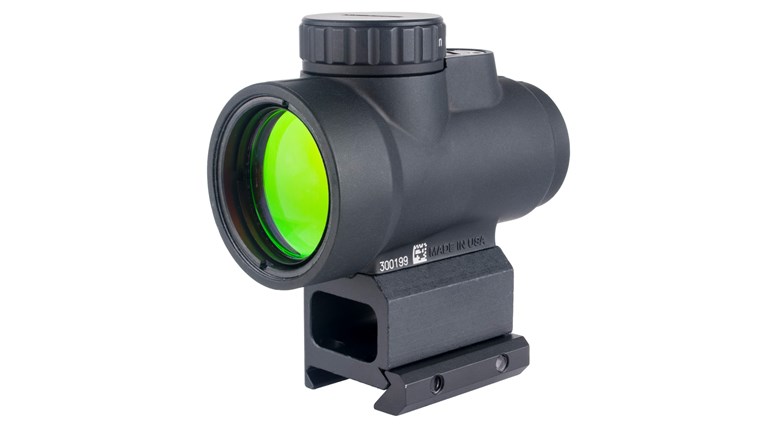
I hate to sound like a whiner, but it sure seemed like everything I did that November morning in northeast Texas was a struggle. Heck, it should’ve been more like a semi-luxury deer hunt, what with the private lease’s ready-made blinds, food plots, ATVs and abounding whitetails, but in reality it was a strain to even drag my bones through the cabin door before dawn. Then there was the odyssey of monkeying myself into the Ranger, wheeling into the dark woods and battling the brambles before parking myself in the blind—all without slumping over backward and breaking my neck.
Sweating profusely but finally in position, I sat stationary, 100 yards from a feeder in an oak grove amid a thick fog that drifted off the Red River like a blanket of bad luck. A few hours into it, a deer—a buck—showed up, but I failed to get off a shot.
Later on when Graham Hill picked me up to go get some breakfast, we first pulled alongside his trail cam to fetch the memory card. Immediately he shoved the card in the reader and studied the buck I’d seen earlier.
“Old buck,” said Hill. “Ten-point. Big belly. Sway back. Certainly a shooter,” he said before looking at me then pausing before he asked the obvious: “Why didn’t you shoot?”
“Just couldn’t see him well enough,” I said. “When it got light I realized I was just too low to the ground, and there was too much foliage to see over, much less shoot through.”
Hill shrugged and smiled, returned the card to the trail cam then floored the gas pedal with his powerful right hand. Of all people, Graham Hill understood my struggle. In fact, he’d arranged it.
On the other hand, you may not be so sympathetic. Maybe you read “private lease,” “feeder” or “ATV” and thought I might be somewhat of a prima donna if I’m moaning about how tough it is to hunt a silly deer. But, dear reader, I’ve left out one small detail about this particular hunt. You see, on that day in Texas I purposely confined myself to a wheelchair to experience perhaps a tiny taste of what Hill and thousands of other mobility-impaired hunters must overcome every day if they are to enjoy the outdoors like the rest of us. I wanted to see the woods from Hill’s perspective, if only for a couple of days, while in deer camp. And let me tell you, it’s not easy being Graham Hill.

Graham, the Man
Graham Young Hill was born in 1966 in San Antonio, Texas. Hunting with his father is his earliest memory. As a star high-school athlete he started at running back, linebacker and also anchored his district-winning 1,600-meter relay team. By any standard he was a popular, active American boy who had a girlfriend and giant dreams of grandeur. Then an event changed his life forever.
In what he describes as a “garden-variety car accident,” one evening the teenaged Hill was ejected from his Suburban before the truck rolled over him. His lower vertebrae was damaged; he was lucky to survive at all. As a paraplegic, Hill’s been confined to a wheelchair ever since, but, as I learned, it hasn’t stopped him from doing most things in life.
“I grew up hunting—it wasn’t just a hobby but a lifestyle—so I wasn’t giving it up just because I got injured,” said Hill.
Indeed, when he was released from the hospital weeks after the crash he immediately began lifting weights. Six months later, when the fall deer season arrived, he took a nice 8-point from his father’s truck—a legal method for disabled hunters in Texas. The following year he lettered in wheelchair track and tennis, and his times in the 10K and marathon were so fast the University of Texas-Arlington offered him a track scholarship. He accepted, and soon vied to participate in the 1988 Olympics—back when the wheelchair track events were included in the main games.
Ultimately, however, Hill decided to concentrate on academics, so he transferred to Sewanee: The University of the South for undergrad before attending law school at Tulane. Today, Hill is a managing partner at Ice Miller law firm in Washington, D.C., where he lives with his wife and three children. He currently serves on the NRA Board of Directors, and is an avid 3-gun shooter and staunch Second Amendment advocate. He’s never missed a hunting season.
I met Graham at the NRA Annual Meetings some time ago where we chatted about guns, politics and our mutual passion, hunting big whitetails. Finally, in 2017, after years of talking about hunting together, he pitched me on an article idea: He proposed that I join him for a deer hunt at his lease in Texas, but rather than hunting as I normally would, I was to embed myself in a wheelchair as soon as I arrived at camp. I’d live in it and hunt from it, just as he does. Hill’s idea was not to boast of his personal story, but rather, to encourage and convince other physically impaired people that hunting is not only possible for them but fun and beneficial. He also hoped to raise awareness of able-bodied hunters so that perhaps they can better understand the challenges faced by those who can’t hunt on two feet. I readily agreed.

The Wheelchair’s Challenge
While Hill’s legs have atrophied significantly since his accident, when he shakes your hand or flicks a bag of corn into the bed of his truck as if it were a Walmart lawn chair, you realize he’s got the upper-body strength of a silverback gorilla from 35 years of exclusively using his hands, shoulders and arms to function. After getting to know him, though, you discover that it’s largely his mind that has allowed him to thrive as a human and as a hunter, for he’s naturally—and now by necessity—a great strategist.
For Hill, deer hunting from a wheelchair is not all that hard anymore—these days he says his biggest challenge is packing enough snacks for his growing boys when they hunt with him. But it wasn’t always like that. He’s spent the better part of his adult life devising, experimenting, discarding and refining techniques that make hunting easier for him. A few have almost killed him.
Not long after he joined the Pecan Bayou Hunt Club in northeast Texas near Clarksville, he grew tired of asking his buddies to help him into a treestand, so he devised a hoist system consisting of block-and-tackle, a rock-climbing harness, rope, belay system and a wooden porch swing to raise himself high into a tree. The rig was effective, but eventually proved too dangerous—perhaps even “quasi-suicidal”—and time-consuming. He’s been high-centered or mired in mud at night with no cell service more times than he cares to recall. But he’s a hunter, so he continually evolves.
These days, Hill has the means to afford a side-by-side ATV and a well-used Argo amphibious vehicle he painstakingly camouflages to form a rolling, floating, mobile blind from which he’s taken a pile of game. But for years, Hill hunted directly from his wheelchair by parking it in ground blinds he constructed from metal horse panels and burlap.
As I found, this style of ground hunting certainly has its challenges, but it can also be effective if practiced. The really tough part of deer hunting—as even able-bodied hunters know—is what to do once a deer is taken. ATV-mounted winches are handy; helping hands are even better. So able-bodied hunters should understand that most mobility impaired hunters aren’t looking for handouts; they just want to hunt, enjoy some camp camaraderie and maybe get a little help dragging a buck out of the woods if the time comes—just as we all do.

Wheelchairs Ain’t for Wimps
During the first minutes of my hunt, it became evident that wheelchairs—even custom, lightweight, expensive ones—aren’t made for off-roading. A 1-inch-diameter stick in the trail requires that you lean back in the chair to do a wheelie so you can get the front wheels over it. Trouble is, anytime you do that you can easily fall backward. Mud, soft ground, logs, ruts and briars are closer to impasses than mere annoyances. If you are to hunt on your own from a wheelchair, it’s best to do your stand preparation way in advance. Hill recommends full-fledged dress rehearsals long before opening day. Don’t expect to roll to the woods and put up a blind as able-bodied folks can do. Clearing shooting lanes and access points, and making blinds can take days.
There’s also another facet I failed to consider. While I’ve never been overly afraid of wild boars and bears and such, being bound to a wheelchair certainly raises the level of excitement in places that hold these animals. After all, you can’t just turn around to check your 6 easily, and you certainly can’t dash away or climb a tree. It’s just another thing to think about. Moreover, if you shoot an animal and it runs into a place you can’t access with the chair—as they often do—you must phone a friend, simple as that.
Yet Hill contends all of this is much harder for someone like me who has not had to live everyday life in a wheelchair. Mobility-impaired people are accustomed to everyday challenges like showering, eating, entering vehicles, and even getting in and out of bed. Hunting is just another learned skill.
“It may be hard the first time you go afield, says Hill, “but over time, solving the challenges you’ll face proves rewarding and beneficial—not just for hunting, but in life.”

The Deer Hunt Continues
After breakfast Hill and I spent midday re-upping the Argo’s camouflage, scouting the ranch, filling feeders and watching Oklahoma drum Oklahoma State with the rest of the guys in camp. At 3:30 p.m. I gathered my gear—my rifle and a backpack that I learned was best carried on my lap—and rolled out the door. Pulling myself into the Ranger was easier already now that I knew the technique, as was using my left hand to fold the wheelchair and flip it into the ATV’s bed. Hill was ready and waiting in the driver’s seat, so he pressed the gas using a stick device he’d made, and we headed to the woods. He dropped me off in front of a non-elevated box blind and drove away to his spot. I muscled my way in and set up properly by making sure my line of sight and shooting lanes were clear of obstructions.
Just before dusk I spied a doe 60 yards out and feeding slowly toward me. I had situated the chair perfectly—and luckily—so I didn’t have to rotate it, so making the shot wasn’t hard. In fact, after figuring out how to use the wheelchair’s frame and my knee as a built-in rear rifle rest, I felt it may have even been an advantage.
The 130-grain Barnes X from my 7mm-08 zipped through the doe’s lungs, and she ran only 40 yards before dropping dead within sight. I was elated—having killed the doe from the wheelchair—and I couldn’t resist going to claim my prize. Only problem was, 30 yards through the woods in the chair seemed more like a half-mile. It took me 20 minutes to cover the distance. My arms burned like bonfires and sometimes I teetered on the verge of toppling over, but I made it. Once there it was all I could do to lean forward and pet her perfect ears and thank her—much less drag her out of the woods. As last light faded, I phoned my hunting buddy, Graham Hill.

Ten minutes later the one-man mechanized cavalry arrived and drove directly to the doe. Together we hoisted her into the Ranger, closed the tailgate and rolled, happily, back to camp. Hill whipped into the club’s community freezer, attached a cable to the deer’s leg and hoisted it out of the vehicle before deftly swinging it into the cooler. Minutes later we were back in the cabin, drinking cold beer with the guys and spinning stories of hunts past and adventures to come. I assure you no one—especially Hill—was spared from the insults and good-natured put-downs for which any good deer camp is known. But still, I couldn’t help thinking ahead to the following day.
The next morning my act would end. I’d wake up, put my feet on the ground, walk to the bathroom, stride to the kitchen for coffee, gather my stuff in a few easy trips and toss it into my truck. I’d hop in, drive over to the cooler, grab my doe from the hook and lay her in the pickup. Then I’d stand on the gas and cruise back across the Red River to my regular life. But it wouldn’t be so easy for Hill and thousands of other hunters like him. Each minute may not be the pure struggle that it was for me on that first morning in the deer woods, but certainly each day holds more challenges than most of us know.
I left Pecan Bayou Ranch inspired and thinking that I should be able to do more. I learned a bunch about the deer and the rich deer-hunting culture of northeast Texas. More importantly, I left there with a new hunting buddy and newfound respect for folks who are just like you and me, only they’ve suffered an impairing injury at some point in their lives. They just want to get out and hunt a little bit, like the rest of us. So, if you have a chance, get involved. Encourage a mobility-impaired hunter if you know one who’d like to go. Offer a hand if he needs a little help with his adventure. After all, we’re all hunters, and that’s what we do.
Graham Hill’s Tried-and-True Tips for Mobility-Impaired Sportsmen
• Pick the most powerful rifle you can handle. While lightweight rifles are great for their nimbleness, Hill uses powerful magnums so his deer are less likely to run far. Practice shooting on a range the same way you hunt. Discover the chair angle and technique with which you are most comfortable. Practice shooting from both sides of your body.
• Many states allow mobility-impaired sportsmen to hunt from a vehicle. Consider using one where permitted.
• Pick a blind setup that works for you and practice from it. Tent-style pop-up blinds are great, but only if they have large doors for entry, roomy areas for a wheelchair and low windows that offer visibility and room to shoot.
• Learn how best to carry and store your gear while hunting. Consider placing your backpack and rifle on your lap so you can easily access both. Then rehearse in advance.
• Elevation is important when considering a blind/stand for your wheelchair.
• Consider making a blind from metal-grid horse panels. Use three panels to form a triangle around your chair; cut them in lengths to fit and for the right height; brush them in using natural foliage. “They’re cheap, easy to find and you can customize them in any way that works for you,” says Hill. “The squares give you multiple rifle rests.”
• Go afield in an Argo, ATV or similar off-road vehicle if you can afford it. “Expensive, battery-powered ‘track chairs’ just don’t have a lot of range,” says Hill. Then build a blind that will accommodate your vehicle.
• Consider placing two sets of shooting sticks near your chair so you can easily move your rifle if the animal or shot angle suddenly changes. It’s a lot easier than moving your chair.
• Hill believes in using cover scents where he hunts, because when hunting on the ground wind currents affect you more. “I use raccoon urine,” he says. “It works well, but it also leads to the guys ragging me mercilessly.”
• Invest in a good headlamp. While pushing a wheelchair with both hands, you’ll need it.
NRA Adaptive Shooting Program
About 74 million Americans identify as disabled, and their population is growing due to aging of the baby-boomer generation and as injured members of the military return from overseas. As a group they are generally under-represented in the shooting sports and in hunting fields. The NRA Adaptive Shooting Program aims to increase access and participation in shooting sports for them with specialized techniques and technologies that are safe and unique to each individual.
In fact, Graham Hill is Vice Chairman of the NRA Disabled Shooting Sports Committee. Dr. Joe Logar is National Manager of Adaptive Shooting within the NRA’s Education and Training Division. At the NRA Carry Guard Expo, Logar conducts a couple of seminars, “The Aging Defender” and “Adaptive Shooting Considerations.” At the NRA Great American Outdoor Show he’s conducted “The Aging Hunter” seminar. Visit AdaptiveShooting.NRA.org to find educational resources, locate shooting ranges and learn about events tailored to disabled sportsmen.


